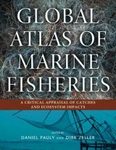![Biology and Management of Coregonid Fishes - 2011 Biology and Management of Coregonid Fishes - 2011]()
Click to have a closer look
About this book
Customer reviews
Related titles
About this book
Biology and Management of Coregonid Fishes – 2011 provides a well-balanced overview of most of the contemporary research on coregonid fishes presented at the 11th International Symposium on the Biology and Management of Coregonid Fishes, held September 26–30, 2011 in Mondsee, Austria. These symposia on the Biology and Management of Coregonid Fishes have a long tradition. Since the first meeting took place in 1969, experts in coregonid biology have now met eleven times in Europe or North America.
This present volume is therefore the continuation of a long series of symposium proceedings, most of which have been published in Advances in Limnology. Within this context, the considerable advances that research has made over the years in understanding this fascinating group of teleost fishes are apparent in Biology and Management of Coregonid Fishes - 2011.
Coregonid fishes are widely distributed across the northern hemisphere in an enormous variety of different forms. Many aspects of the biology of these fishes are similarly variable and are reflected in the first section of Biology and Management of Coregonid Fishes - 2011. It begins with a topical review of population dynamics of whitefish in European Alpine lakes, includes several contributions related to fisheries and also embraces aspects such as migration behaviour, distribution and habitat, physiological performance, morphological variability, otoliths and cell morphology. The section contains contributions from eight countries, namely Germany, Canada, Estonia, Finland, Poland, Russia, Sweden and the USA.
The second section is devoted to evolutionary ecology and genetics. Six articles from Austria, Latvia, Norway, Russia and the USA give a timely overview of current research on the differentiation of populations, hybridisation, genetic variability and diversity.
Some populations and habitats of coregonids are endangered by the excessive exploitation and pollution of freshwater ecosystems. Even protected areas run the risk of being affected by climate change and its consequences and these issues are the focus of the third section on conservation. It comprises five articles from the UK, the USA and Norway.
The present volume continues with the original, integrative idea which formed the basis of the first symposium held in 1969, i.e. to provide an open and encouraging forum for researchers working on this remarkable group of fishes, to bring them together and to promote exchange across all sorts of boundaries. By doing so, it provides new impetus for the continuing research into coregonid as well as general fish biology.
Customer Reviews





















![Les îles Saint-Paul et Amsterdam (Océan Indien Sud): Environnement Marin et Pêcheries [Saint-Paul and Amsterdam Islands (South Indian Ocean): Marine Environment and Fisheries]](http://mediacdn.nhbs.com/jackets/jackets_resizer_medium/26/260268.jpg?height=150&width=107)

















